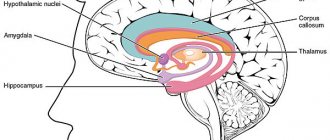Sociological explanations of the causes of deviation
⇐ PreviousPage 8 of 8Many forms of deviation are practiced by many people, that is, they are more or less constant and widespread (crime, alcoholism, drug addiction, prostitution, suicide, vagrancy, etc.). In such cases, it is obvious that deviation is generated not so much by personal as by social factors, that is, reasons rooted in the social structure itself. Sociology should identify the social prerequisites for deviation.
The most common sociological explanation of deviation is the theory of anemia (literally “lawlessness”, “lack of norms”). This theory was first formulated by E. Durkheim and later developed by R. Merton.
For Durkheim, as we have already noted, anomie is a weakening of the influence of established norms in society. The result of this is an intensification of the processes of social disorganization.
People do not have clear ideas about what they should strive for and do not consider existing behavioral norms authoritative. Accordingly, the number of deviant behaviors increases.
Anomie arises as a result of rapid social changes, when old values and norms no longer correspond to the changed reality - this is the state that Russia is experiencing today. Another reason for anomie may be the powerful influence of another culture, as a result of which its own norms lose authority, but the norms of the new culture do not yet have sufficient authority. Another reason for anomie is the complication of the structure of society, the identification in it of many professional, religious, age, territorial and other communities and groups with their own subcultures, which weakens the influence of general cultural norms.
According to Merton, anomie arises as a result of a discrepancy between culturally approved goals and recognized legitimate means of achieving them, as discussed above.
Anomie can indeed provoke deviant behavior, but this is not its only cause. Societies can be more (modern societies) or less (ancient societies or medieval European societies) anemic. However, deviant behavior is present in any society. It may also be caused by social inequality: in any society there are groups whose social position is worse than that of others. Legal ways of improving their position, professional growth, increasing their prestige, etc. are often closed to them. Representatives of such segments of the population tend to deviate from accepted norms. The existing social order may be perceived by oppressed groups as something improper and unfair. And such groups have a corresponding attitude towards him.
The above does not mean at all that the “upper strata” of society are alien to deviation. However, if oppressed groups may be characterized by more or less petty theft, hooliganism, etc., then for the “elite” - large financial scams, bribery of superiors, etc.
The cultural heterogeneity of a society can also serve as a cause of deviance: for example, from the point of view of medieval Christians, Jews were undoubtedly considered “deviant because of their adherence to their religion and their stubborn reluctance to become Christianized. In Imperial Russia, Jews and Muslims were treated in a similar way. Thus, cultural (in this case religious) originality was perceived as a deviation requiring punishment or correction.
Modern complex society is characterized by the presence of many subcultures, the values and norms of which differ significantly. Representatives of one subculture may view the behavior of another as deviant.
II. Consolidation of what has been learned.
1) Complete the tasks, p. 183–184 textbook.
2) Work in groups. Answer questions about articles.
Homework:
§ 16.
⇐ Previous8
SocioDone
Main types of deviation (in the broad sense of the word)
.
1.
Cultural and psychological deviation
.
Cultural deviance is behavior that deviates from cultural norms. This behavior is studied by sociologists. Psychological deviation is deviations in the personal organization: psychotics, neurotics, paranoids, etc. These deviations are studied by psychologists. These two types of deviation often overlap: cultural deviation can be a consequence of personality pathologies. Radical political behavior is often seen as an outlet for emotional militancy. Prostitution is often explained as a result of a lack of emotional intimacy and support during childhood, when the girl had limited opportunities to develop a secure identity. However, personal psychopathologies are not the only cause of cultural deviation. The reasons for the latter may also be social prerequisites, which will be discussed below. click to order a cake for your child's birthday
2.
Individual and group deviation.
A teenager who grew up in an intelligent family and becomes a drug addict thereby demonstrates individual deviation. In a complex society, there may be many deviant subcultures whose norms contradict general moral norms. Children raised in alcoholic families who subsequently become part of a homeless group where substance abuse is commonplace exhibit group deviance. The use of toxic substances in this group of children is not a protest against the norms of the subculture, but a mechanism for gaining status within the group. Thus, there are two pure types of deviants: 1) individual deviants deny the norms that surround them, 2) group deviants are conformists within deviant groups.
3.
Primary and secondary deviation.
Primary deviation is the deviant behavior of an individual who is a conformist in all other manifestations. This person is not considered a deviant either by himself or by others, he is perceived as somewhat eccentric. Secondary deviation is deviation that follows the public identification of a person as a deviant. Often, a single deviant act (homosexual intercourse, drug use, theft, etc.) or even the suspicion of committing such an act is enough for a person to be labeled a deviant. This labeling process is extremely important. A person who commits primary deviation generally supports a system of social norms and is susceptible to social influence. After being “labeled” as a deviant, a person is isolated, joins a group of his own kind and is excluded from society. Deviation becomes the central place of his life organization.
4.
Positive and negative deviation
.
Positive deviation is deviations from norms that are encouraged in a given society. A genius, a hero, a spiritual leader are positive deviants. Although positive deviation occurs in any society, negative deviation attracts the most attention from sociologists. Negative deviation is behavior that is condemned by society and entails punishment. Criminals, drug addicts, alcoholics, prostitutes are negative deviants.
Pages: 3
Other materials:
Institutions of power and economic development: main directions of influence It is very difficult to unambiguously determine the direction and degree of influence of government institutions on economic development. There are different points of view on this issue. According to one opinion, it is high-quality political and economic institutions ...
Theoretical foundations for the prevention of drug addiction and substance abuse in a secondary school. Concepts, causes, consequences of drug addiction and substance abuse In modern research, among the main reasons contributing to the predominant drug addiction of minors and young people, social factors (including microsocial), psychological and biological are identified [1;55]. To social...
Interviewing When interviewing, contact between the researcher and the respondent is carried out with the help of an interviewer, who asks questions provided by the researcher, organizes and directs the conversation with each individual and records the ...
Definition of the word “Deviation” according to TSB:
Deviation - Deviation (from Late Latin deviatio - deviation) (biological), a type of phylembryogenesis, in which a change in the development of an organ occurs in the middle stages of its formation and leads to a change in the structure of this organ in an adult organism compared to its ancestors. For example, the epidermal part of the scale primordia in reptiles at the middle stages of its development does not undergo ossification, as in sharks, but keratinization. The term "D." introduced by the German scientist F. Müller (1864). Wed. Archallaxis, Anabolia.
Deviation - compass, deviation of the moving compass system from the position that fixes the direction to the magnetic pole of the Earth (for a magnetic Compass) or to the geographic pole (for a Gyrocompass). The pressure of a magnetic compass is caused by the influence of magnetized bodies (for example, the steel hull of a ship), as well as the electromagnetic fields of ship electrical and radio installations. D. is eliminated with the help of auxiliary magnets that create a system of compensating magnetic fields. Residual D. is taken into account using tables. The gyrocompass is free from magnetic magnetic resonance, but its readings are affected by changes in heading, speed, and geographic latitude of the location (high-speed magnetic resonance). movement with acceleration (ballistic D.). pitching, especially on the side when heading NO and NW (quarter D.). The pressure of the gyrocompass is compensated or limited by correctors (see Gyroscope, Gyroscopic devices).
Deviation - in artillery, the phenomenon of random, not taken into account in the laws of dispersion, deviation of projectiles (bullets) from the average trajectory expected under given firing conditions. The causes of damage can be mechanical disturbances in the movement of the projectile in the barrel (for example, the projectile breaking off the rifling) or in the air (for example, malfunction of the stabilizer feathers, etc.), as well as random sudden changes in meteorological conditions during the flight of the projectile.
Reasons for deviant behavior
Previously, attempts were made to explain the causes of deviant behavior based on the biological characteristics of norm violators - specific physical features, genetic deviations; based on psychological characteristics - mental retardation, various mental problems. In this case, the psychological mechanism for the formation of most deviations was declared to be addictive behavior ( addiction - addiction), when a person seeks to escape from the difficulties of real life, using alcohol, drugs, and gambling for this purpose. The result of addiction will be the destruction of personality.
Biological and psychological interpretations of the causes of deviation have not found unambiguous confirmation in science. More reliable are the conclusions of sociological theories that consider the origin of deviation in a broad social context.
According to the concept of disorientation proposed by the French sociologist Emile Durkheim (1858-1917), the breeding ground for deviation will be social crises, when there is a mismatch between accepted norms and a person’s life experience and a state of anomie—the absence of norms—occurs.
American sociologist Robert Merton (1910-2003) believed that the cause of deviation would not be the absence of norms, but the inability to follow them. Anomie is the gap between culturally prescribed goals and the availability of socially approved means to achieve them.
Let us note the fact that in modern culture success and wealth are considered the leading goals. But society does not provide all people with legitimate means to achieve these goals. Therefore, a person has to either choose illegal means, or abandon the goal, replacing it with illusions of well-being (drugs, alcohol, etc.) Another option for deviant behavior in such a situation is rebellion against society, culture and established goals and means.
In ϲᴏᴏᴛʙᴇᴛϲᴛʙii with the theory of stigmatization (or labeling), all people are prone to violating norms, but those who are labeled as deviants become deviants. For example, a former criminal may renounce his criminal past, but others will perceive him as a criminal, avoid communicating with him, refuse to hire him, etc. As a result, he has only one option left - to return to the criminal path.
Let us note that in the modern world, deviant behavior is most characteristic of young people as an unstable and most vulnerable social group. In our country, youth alcoholism, drug addiction, and crime are of particular concern. It is worth saying that to combat data and other deviations, comprehensive measures of social control are required.









